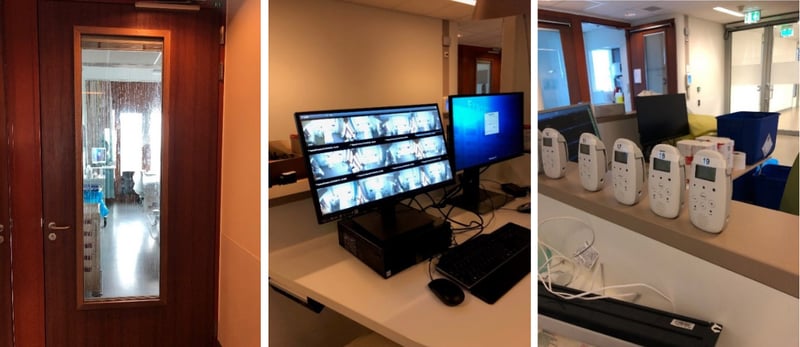[1] McCabe R et al., ‘Adapting hospital capacity to meet changing demands during the COVID-19 pandemic’, BMC Medicine 18 329 (2020).
[2] Stephens KK et al., ‘Collective Sensemaking Around COVID-19: Experiences, Concerns, and Agendas for our Rapidly Changing Organizational Lives’, Management Communication Quarterly, June 2020.
[3] Glover T et al, ‘Radiology department preparedness for COVID-19 – experience of a central-London hospital’, Future Healthcare Journal, 2020 Jun; 7(2): 174-176.
[4] Cipolotti et al., ‘Factors contributing to the distress, concerns, and needs of UK Neuroscience health care workers during the COVID-19 pandemic’, Psychology and Psychotherapy: Theory, Research and Practice. July 2020.
[5] Keeley et al., ‘Staffing Up For The Surge: Expanding The New York City Public Hospital Workforce During The COVID-19 Pandemic’, Health Affair 39, No. 8 (220): 1426 – 1430.
[6] https://clapforourcarers.co.uk/
[7] Chen et al. ‘Touch Me Not: Safe Distancing in Radiology During Coronavirus Disease 2019 (COVID-19)’, Journal of the American College of Radiology, Volume 17, Number 6, June 2020.
[8] Wosik et al. ‘Telehealth transformation: COVID-19 and the rise of virtual care’, Journal of the American Medical Informatics Association, 27(6), 2020, 957-962.
[9] https://www.nuffieldtrust.org.uk/resource/chart-of-the-week-sickness-absence-rates-in-the-nhs-in-april-were-at-their-highest-since-records-began
[10] Bohmer et al. ‘Learning Systems: Managing Uncertainty in the New Normal of Covid-19’, NEJM Catalyst, July 2020.
[11] Keeley et al. ‘Staffing Up For The Surge: Expanding the New York City Public Hospital Workforce During the COVID-19 Pandemic’, Health Affairs 39, No. 8 (2020): 1426-1430.
[12] Petzold, M. B., Plag, J. & Ströhle, A. Dealing with psychological distress by healthcare professionals during the COVID-19 pandemia TT - Umgang mit psychischer Belastung bei Gesundheitsfachkräften im Rahmen der Covid-19-Pandemie. Nervenarzt 91, 417–421 (2020).
[13] Biggs, A., Brough, P. & Barbour, J. P. Exposure to extraorganizational stressors: Impact on mental health and organizational perceptions for police officers. Int. J. Stress Manag. 21, 255–282 (2014).
[14] Morgantini, L. A. et al. Factors Contributing to Healthcare Professional Burnout During the COVID-19 Pandemic: A Rapid Turnaround Global Survey. medRxiv Prepr. Serv. Heal. Sci. 2020.05.17.20101915 (2020) doi:10.1101/2020.05.17.20101915.
[15] Heath, C., Sommerfield, A. & von Ungern-Sternberg, B. S. Resilience strategies to manage psychological distress among healthcare workers during the COVID-19 pandemic: a narrative review. Anaesthesia 75, 1364–1371 (2020).
[16] Helton, W. & Head, J. Earthquakes on the Mind. Hum. Factors 54, 189–194 (2012).
[17] Zhu, J. et al. Prevalence and Influencing Factors of Anxiety and Depression Symptoms in the First-Line Medical Staff Fighting Against COVID-19 in Gansu. Front. psychiatry 11, 386 (2020).
[18] Sutcliffe, K. & Vogus, T. Organizing for resilience. in Positive organizational scholarship (eds. Cameron, K., Dutton, K. J. & Quinn, R.) 94–121 (Berrett‐ Koehler, 2003).
[19] Brooks, S. K., Dunn, R., Amlôt, R., Rubin, G. J. & Greenberg, N. Protecting the psychological wellbeing of staff exposed to disaster or emergency at work: a qualitative study. BMC Psychol. 7, 78 (2019).
[20] Kisely, S. et al. Occurrence, prevention, and management of the psychological effects of emerging virus outbreaks on healthcare workers: rapid review and meta-analysis. BMJ 369, m1642 (2020).
[21] Cooke, F., Cooper, B., Bartram, T., Wang, J. & Mei, H. Mapping the relationships between high-performance work systems, employee resilience and engagement: a study of the banking industry in China. Int. J. Hum. Resour. Manag. 1–22 (2016) doi:10.1080/09585192.2015.1137618.
[22] Kuntz, J., Malinen, S. & Naswall, K. Employee resilience: Directions for resilience development. Consult. Psychol. J. Pract. Res. 69, 223–242 (2017).
[23] Lim, D. H., Hur, H., Ho, Y., Yoo, S. & Yoon, S. W. Workforce Resilience: Integrative Review for Human Resource Development. Perform. Improv. Q. 33, 77–101 (2020).
[24] Bader, B., Schuster, T. & Dickmann, M. Managing people in hostile environments: lessons learned and new grounds in HR research. Int. J. Hum. Resour. Manag. 30, 2809–2830 (2019).
[25] Walker, B., Malinen, S., Näswall, K., Nilakant, V. & Kuntz, J. Organizational resilience in action: A study of a large-scale extended disaster setting. in Research Handbook on Organizational Resilience (Edward Elgar Publishing, 2020).
[26] World Health Organization. Mental Health Considerations during COVID-19 Outbreak. (2020).
[27] International Federation of Red Cross and Red Crescent Societies. Mental health and psychosocial support for staff, volunteers and communities in an outbreak of novel Corona virus. (2020).
[28] Inter-Agency Standing Committee. Briefing note on addressing mental health and psychosocial aspects of COVID-19 Outbreak-Version 1.1. (2020).


